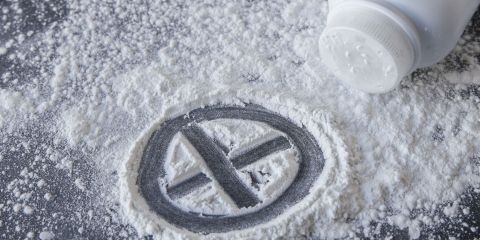Key Points
- Talcum Powder has been linked to cancer and legal issues surround Johnson & Johnson
- Cornstarch is likely to be the best alternative baby powder
- Arrowroot Starch and Tapioca starch are good alternatives if there are corn allergies or willingness to avoid GMO
- Baking Soda can be used but test with a small amount for any reactions first
- A range of different flour's such as corn, oat and rice also offer good alternatives
Talcum powder has been under increasing scrutiny in recent years thanks to concerns surrounding its potential adverse health effects . To help you understand why and to find a baby powder that works for you and your family, we’ve put together a brief guide on what talcum powder alternatives exist.
Is baby powder safe to use?
Is baby powder safe to use? Baby powders are generally safe to use, but, those containing talc (i.e. talcum powder) can be called into question as there are risks that lead to respiratory issues or even cancer. In any case, there is no strong medical reason to use baby powder.
What exactly is talcum powder?
Talcum powder is a kind of Baby Powder made from a fine white powder (talc) used to absorb moisture from the skin, thereby reducing friction and protecting it from damage.
Talcum powder has historically been used as an effective tool for preventing or treating diaper rash in babies.
Many adult men and women also use talcum powder all over their body to soothe rashes, protect the skin or to reduce odours around areas such as the genitals.
Talcum powder is manufactured by crushing naturally-occurring talc rocks, which can contain a variety of minerals including magnesium and silicon. Whilst the minerals found in talc possess a variety of benefits for skin health, talc can sometimes contain traces of carcinogenic asbestos.
This is because, before being mined, talc is often found in close proximity to asbestos. Although most manufacturers make every effort to refine their talc and to eliminate all asbestos traces, fractional amounts of this harmful substance have been found in talcum powders sold on the market.
Why has the use of talcum powder become so controversial?
Talcum powder containing asbestos has come under fire for its potential cancer-causing qualities. This is because asbestos is an established carcinogen and is suspected of having caused a number of cases of lung cancer in talc miners.
Indeed, asbestos is known to increase a person’s risk of developing respiratory issues and diseases such as lung cancer when inhaled in significant quantities.
Whilst miners of talc may be at risk of lung cancer, users of talcum powder for cosmetic reasons are not considered at risk of developing the disease. Women who use talcum powder for hygiene reasons around the genital area, however, are thought to be at possible risk of developing ovarian cancer.
This is because the fine particles found in the powder are able to travel to the ovaries when applied around this part of the body. Studies looking into this possible link have so far come back with mixed results, with some findings stating that talcum powder use puts women at a slightly increased risk of developing ovarian cancer, and others suggesting that there is no risk at all.
The question also remains as to whether talcum powder without asbestos carries any increased risk of developing certain cancers. The picture here is less clear, but thanks to the various lawsuits and controversies surrounding commercial talcum powders, it is still under considerable scrutiny.
What are the main legal issues that have arisen surrounding talcum powder?
Johnson & Johnson’s baby powder is the most infamous talcum powder product on the global market. Complaints about cancer cases possibly caused by the product have been circulating the legal system since 1999, and the company has had to go to great lengths to prove that their product is free from asbestos.

In 2019, for example, Johnson & Johnson ordered lab tests on its baby powder after the US Food and Drug Administration reportedly found trace amounts of asbestos in the product earlier in the year.
The tests ultimately concluded that no asbestos was present in the product, but speculation surrounding talcum powder remains.
Whilst the jury is still out as to whether talcum powder is safe to use on babies or adults, many people agree that erring on the side of caution may be best. Indeed, it is important to note that many babies are absolutely fine and healthy without the soothing properties of the powder.
If you want to avoid talcum powder but rely on it to care for yourself or your baby, however, it is worth investigating possible alternatives. This is particularly true if your child suffers from diaper rash on a regular basis.
We’ve put together a few effective alternatives below that could transform your baby’s daily hygiene routine.
What are the best Talcum powder Alternatives
Cornstarch
Cornstarch is a very common and widely used food ingredient typically found in the baking aisle of the grocery store. It is derived from the endosperm of corn kernels and is totally free from asbestos.

The consistency is very similar to that of talcum powder, making it an excellent alternative to add to your cosmetics drawer. Indeed, cornstarch is so effective at soaking up moisture that it is the most commonly adopted alternative to talcum powder.
As well as being free from asbestos, cornstarch has a larger particle size than talcum powder. This means that it is less likely to find its way into areas of the body such as the lungs or ovaries.
Arrowroot starch
Arrowroot starch is a substance extracted from Maranta Arundinacea, a tropical plant that is most commonly found in South America.
Like cornstarch, arrowroot starch can be found in everyday grocery stores and is often used by bakers following a paleo diet. This is because it is a great gluten-free alternative to flour.
Of course, the nutritional content of arrowroot starch is not of much concern to those using it as an alternative to talcum powder.
Sufferers of corn allergies, however, will be happy to note that they will be able to use it without any adverse effects or irritation.
People wanting to be more sustainable and hoping to avoid genetically modified products or products high in pesticides may also wish to consider using arrowroot starch over other alternatives. This is because it is a non-GMO product and is often sold as a more organic alternative to cornstarch.
Tapioca starch
Tapioca starch is another great alternative to cornstarch. Sometimes referred to as tapioca flour, this product is derived from the root of the cassava plant, a woody shrub native to Brazil but found throughout the continent of South America.
Typically known for appearing in sweet treats and desserts, tapioca starch can be found in many grocery stores. Like arrowroot starch, it is gluten-free and represents a safe option for people with corn allergies.
Baking soda
Most people know baking soda as an ingredient used to help cakes and bread rise, as well as an effective deodoriser for fridges. Thanks to its natural ability to absorb moisture, however, it is also considered an effective alternative to talcum powder.
If your little one has sensitive skin, baking soda may be best avoided. This is because it is rather abrasive and can cause a significant amount of irritation if used too liberally.
If you are worried about using baking soda on your baby, try using only a small amount at first and seeing how they react to it. If there are any issues, you may wish to consider mixing the baking soda with other flours such as cornstarch.
Flour
Flour is an effective alternative to talcum powder that is great at absorbing moisture. Its texture is a little coarser than starches, however, so it should be used with caution. Flour comes in a variety of forms including:
Rice flour
This is essentially just ground up rice that people have been using in face powders since way before talcum powder was first used. Unlike some of the other alternatives already mentioned, rice flour can be a little tricky to get hold of and is most widely available on the internet. It is also a little awkward to use as it has a tendency to become cakey.
Corn flour
Corn flour is widely available from grocery stores and is very absorbent. This makes it an excellent substance for soothing nappy rash and absorbing excess moisture. It should be noted, however, that this ingredient may feel a little harsher on the skin compared to cornstarch, so it should only be used on babies without sensitive skin.
Oat flour
Oat flour is produced by grinding up oats and is a little coarser than the flours already mentioned. Unlike rice flour, however, it is widely available in grocery stores and is relatively inexpensive.
Kaolin clay
Kaolin clay is a cosmetic product that is often found in soaps, deodorants, and scrubs. Thanks to its naturally absorbent properties and its skin-kind texture, it makes a great baby powder for little ones with sensitive bottoms.
Unlike some of the aforementioned items, it is not widely available in grocery stores and may need sourcing from the internet or specialised health stores. If you want to source this product at a cost-effective price, you would do well to buy pure kaolin clay in bulk. You may also find some reasonably priced commercial blended powders, however.
Start your search for talcum powder alternatives today
As we’ve demonstrated in this brief guide, there are plenty of talcum powder alternatives available for you to try out on yourself or your baby. Although the evidence against talcum powder may not be concrete yet, mounting speculation about its adverse health effects means it is a good idea to start looking for alternatives now. You could even start blending some of the above ingredients to come up with your own bespoke baby powder.


